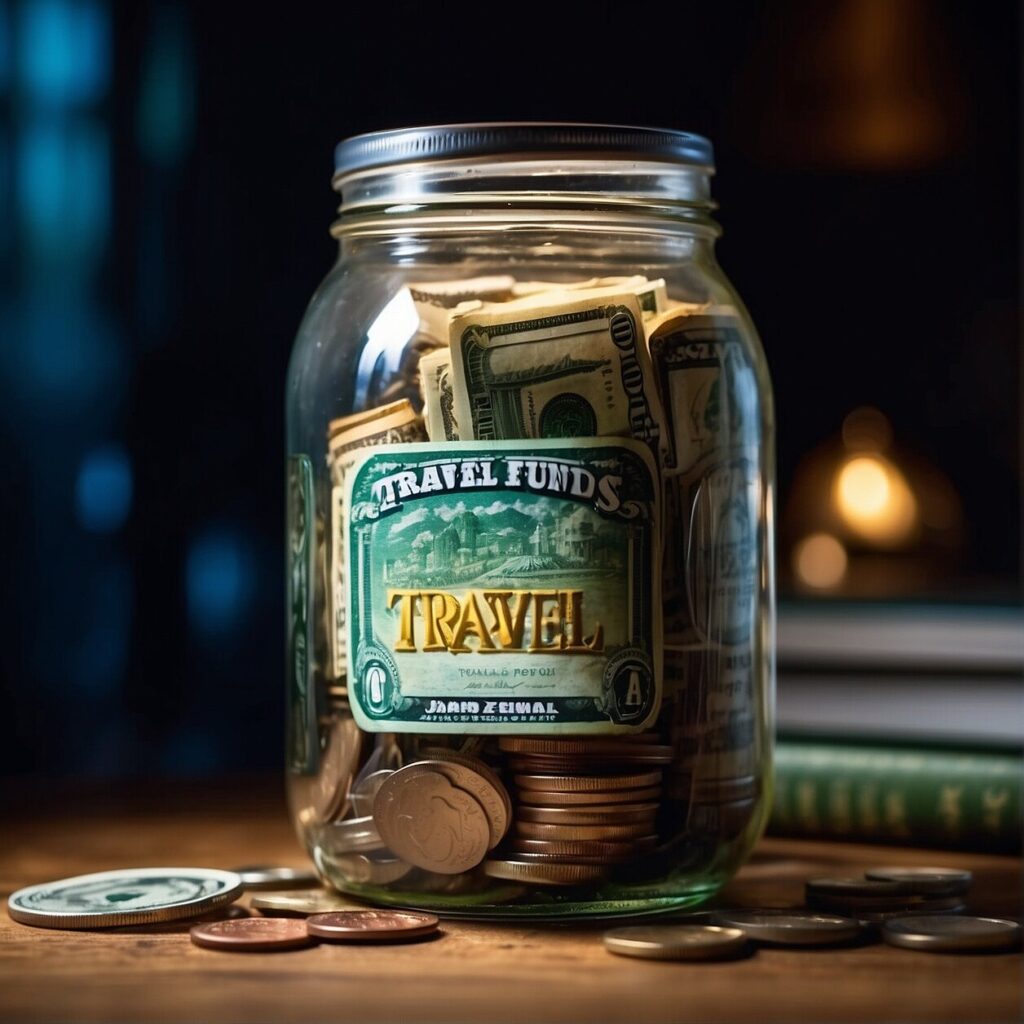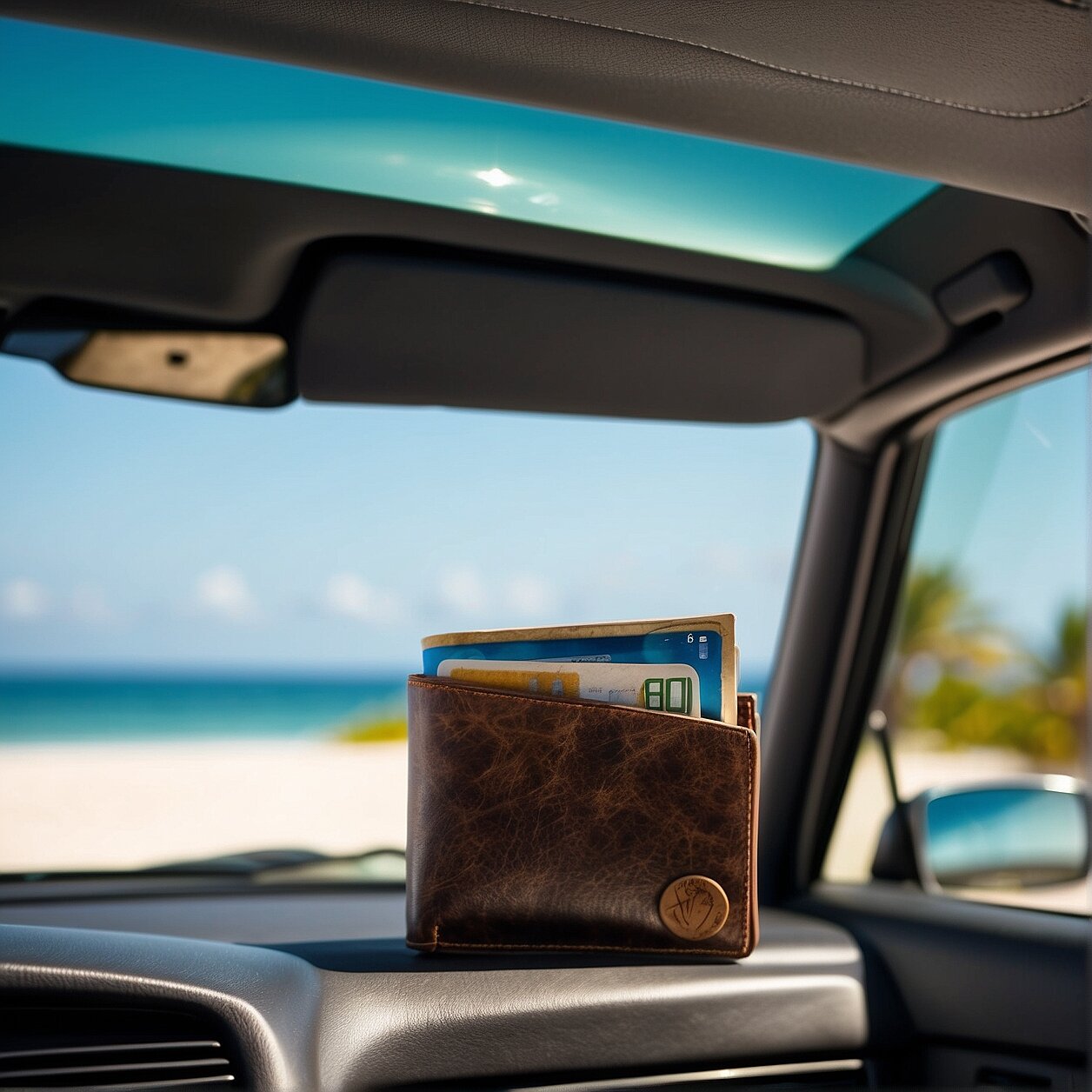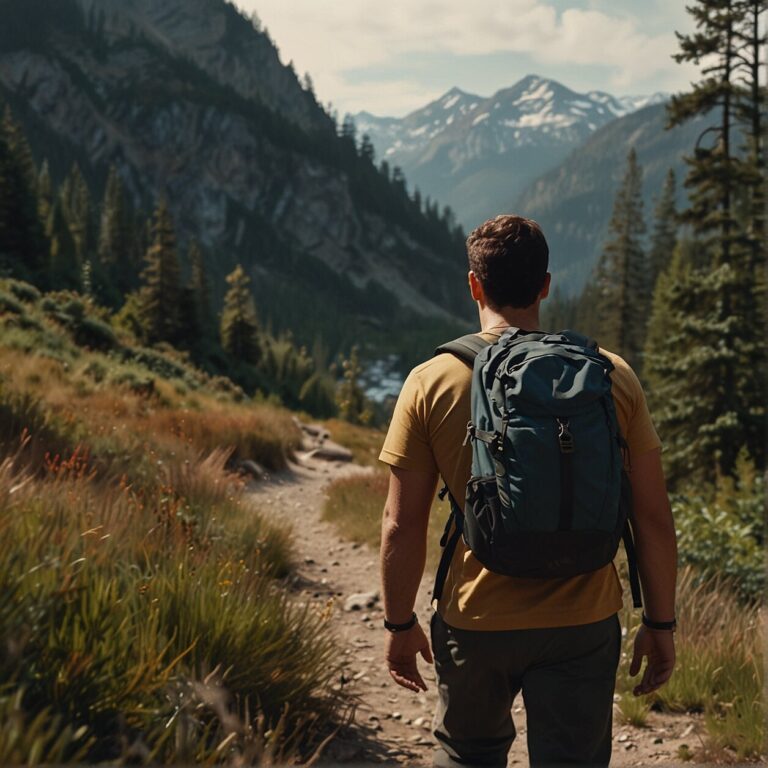Managing Money on the Road: Budgeting Tips for Solo Travelers
Traveling alone throws open the gates to a world of endless possibilities, freeing you to dive deep into the pulsating rhythm of new cultures, landscapes, and experiences. However, it can also present a unique set of financial challenges that can disrupt the ease and joy of your journey if not effectively managed. This article will launch you into a comprehensive exploration of top strategies for adeptly navigating the waters of solo travel finance. We’ll equip you with all you need to know to keep your pocket safe and your journey smooth, from the fundamentals of understanding your travel financial footprint to advanced strategies for saving costs and maintaining financial discipline on the road.
Remember: “A journey is like a dream. It’s not just the destination, but the patchwork of moments and experiences strung along the way. With the right financial planning, those moments need not be overshadowed by the stress of money management.”
Let’s plunge into this engaging discourse, designed to transform the way you think about travel and money management, and power up your next solo journey with financial wisdom.
Understanding Your Travel Financial Footprint
The first step in mastering the art of managing finances while traveling alone lies in understanding your travel financial footprint. This isn’t just your travel budget – think bigger! It’s all about how you plan, perceive, and manage all your financial interactions during your journey.
Now, how does one begin to understand their financial footprint? There are several factors to consider:
- Transportation costs: This includes airfare, train tickets, taxis, rideshares, public transportation, and vehicle rentals.
- Accommodation expenses: This covers everything from hotels and hostels to Airbnb stays or even camping fees.
- Meal costs: Eating out at local restaurants, frequent stops for coffee or snacks, or choosing to cook your meals, all these aspects create their impact too.
- Souvenir purchases: Small keepsakes, local handicrafts, postcards and other mementos will add to your travel spending.
- Entertainment and activities: Museum entry fees, guided tours, adventure sports or recreational activities write their own piece of the expenditure story.
Once you’ve considered all these factors, you’ll have a clearer picture of your travel financial footprint. And remembering, it’s not set in stone! By making smart decisions, prioritising and thinking out of the box, you can adapt and control your financial footprint to suit your solo travel journey.
Understanding your travel financial footprint is a stepping stone from which you can jump onto the saving strategies, budget accommodations, cost-splitting ways, and tips for maintaining financial discipline. But we’ll get to those parts soon, so stick around!

Strategies for Saving Money Before Your Trip
It’s not just about saving money during your trip—it’s equally important to have a game plan for amassing a travel fund before you set off. One effective strategy is to set a budget for your trip well in advance. Calculate an estimated total for transportation, accommodation, food, activities, and other incidental expenses. Always add a buffer for unexpected costs. Having this targeted amount can guide your savings plan, it’s like having a finish line to cross.
Another method you might want to consider is automating your savings. That includes setting up direct transfers from your checking account to your savings account. If you find it hard to save, this could be a game-changer. You decide how much and when to transfer—perhaps a percentage of your salary every month. This makes saving more seamless and manageable, and it prevents you from accidentally spending your travel fund on other things.
It’s also smart to cut back on unnecessary expenses leading up to your trip. Let’s take your daily coffee run as an example. If you spend $5 on coffee every weekday, cutting it out could save you $100 every month. Apply this tactic to larger aspects and watch the saving pool grow. Small changes can lead to big savings.
Don’t overlook earning opportunities, too. If you have extra time, consider a side gig or selling items you no longer need. Use these earnings to boost your travel savings. Finally, if possible, book your airfare and accommodation well in advance to take advantage of early-bird rates, and to spread the cost over a longer period.
If you are diligent and disciplined, the reward will be a stress-free trip because you know that every part of it is already covered financially.
Finding Affordable Accommodations: From Hotels to Homestays
Finding accommodation is a significant part of your travel budget, especially when you’re traveling alone. There’s no one else to split the cost and, therefore, it becomes twice as essential for you to focus on how to save money when booking your stay.
Booking in Advance: Ideally, the first financial fitness move is to book your stay ahead of the trip. An early bird usually gets lower rates, access to discounts, and more options than those who book on the day of arrival. Hence, a little bit of planning goes a long way in maintaining financial health while traveling.
Opt for Hostels instead of Hotels: If you’re on a budget, consider staying in hostels. They often offer private rooms, are usually cheaper than hotels, and you can enjoy a social vibe, perfect for solo travelers.
Consider Renting Apartments or Rooms: Platforms like Airbnb allow you to rent an apartment or a room from a local, which isn’t just cost-efficient but also offers a unique opportunity to experience local living. Cooking your meals in these accommodations can help you save on dining costs.
Try out Work Exchanges: Websites such as Workaway and HelpX connect travelers with locals who are willing to trade room and board for a few hours of work per day. This can be a great way to cut down on costs and experience life in a different country from a local’s perspective.
Some solo travelers can cut significant costs by opting to stay in an unique accommodation such as monasteries, university dorms, or campgrounds. What’s more important is to find the right balance between comfort, location, and price.
Splitting Costs: The Pros and Cons of Shared Services
When traveling solo, shared services can be a real game-changer in keeping your expenditures low. Anyone who’s taken a shared ride or booked a bed in a dormitory-style hostel knows the savings can stack up. But, it’s not without its pros and cons. We shed light on some of these below.
Pros of shared services
Saving Money: The most obvious advantage is the cost-effectiveness. Why rent a whole cab when you can simply pay for your seat, or shell out for a hotel room when you only need a bed? Shared services allow you to pay for exactly what you use, cutting down on wasteful spending. And that saved money? You can put it right back into your travel budget.
Meeting New People: Shared services like ride-shares or hostels are also a great opportunity to meet other people, be it locals or fellow travelers. These chance encounters can often lead to friendships, shared tips about the local area, and even the chance to split costs further on activities or dining out.
Cons of shared services
Less Privacy: The main drawback of shared services is the loss of privacy. You may end up sharing space with someone who has entirely different habits or lifestyles. While this can be a cultural learning experience, it can also be uncomfortable for some travelers.
Uncertainty and Flexibility: With shared services, you’re often dependent on others’ schedules or plans, which brings an element of uncertainty. If you’re someone who loves impromptu trips or values flexibility in your travel plans, shared services may not always be the best fit.
Ultimately, the use of shared services hinges on your personal preferences and priorities while traveling. The balance of saving money against enjoying privacy and flexibility can differ for each traveler. Taking time to evaluate these aspects can help you make an informed decision that best aligns with your travel goals.

Maintaining Financial Discipline on the Road
Just as necessary as it is in everyday life, maintaining financial discipline while on the road is crucial. Not only does it help you avoid overspending, but it keeps you visit-budget within target, affording you the chance to fully enjoy, stress-free, those unforgettable solo trips.
To hold the reins on your expenses effectively, first, cultivate the habit of tracking your spendings. Think about using money tracking apps or a traditional notebook to keep a tab on where your money is going. This will give you an insight into how your cash flows and where you might need to cut back.
Additionally, be proactive in avoiding unnecessary expenses. Always remember to withdraw cash in bulk to minimize ATM fees, resist the urge to eat out at expensive restaurants every day, opt for public transportation where possible, and make sure to look out for discounts and offers.
Nobody can neglect the allure of local markets and souvenir shops. But, practicing mindful shopping is essential. Consider: Do you genuinely want this item, or is the impulse shopping bug biting? Souvenirs can be great to remind us of the places we’ve been, but they can also be costly, and often, unnecessary.
Another smart strategy is to divide your travel budget into daily allowances. This visual separation of funds will help you limit spending to the planned amount each day and create a sort of financial accountability for your decisions.
Lastly, make sure your bank is informed about your travel plans, to avoid having your credit card blocked due to suspicion of fraudulent activity.
Remember that financial discipline doesn’t mean restraining yourself from all enjoyable activities—it’s about making smart decisions that give you peace of mind, help you optimize your trip, and allow you to experience your solo adventure free of financial worries.
FAQ’S
Welcome to the FAQ section, where we seek to answer the most pressing queries about managing finances while traveling alone. These questions have been sourced from seasoned solo travelers, financial advisors, and our keen readers who were once in your shoes, needing clarity. Let’s delve into the menagerie of common questions and provide some succinct, helpful answers to better equip you for your solo travel adventures.
What are some budget-friendly destinations for solo travelers?
There’s an entire world out there ready to be explored, even when your budget is tight. Let’s talk about a few of those destinations that are kind to your wallet.
First, consider Southeast Asia. Countries like Thailand, Vietnam, and Cambodia are known for their affordability, offering rich cultural experiences, sensational food, and cheap accommodations. Take, for instance, Thailand. Here, you’ll find dorm beds for as little as $5 a night and street food that’s both delicious and cost-effective.
Eastern Europe, too, is a treasure trove for the budget-conscious traveler. Cities like Krakow, Poland, and Belgrade, Serbia, offer world-class attractions at a fraction of the cost of their Western European counterparts. For example, a sit-down dinner in Belgrade can easily cost under $10.
If you’re up for some adventure, Latin America is another great option. Countries like Peru and Mexico are both affordable and stunningly beautiful. In Peru, you could treat yourself to a famously delicious ceviche meal for around $3, while Mexico offers hostel beds for about $10.
Lastly, don’t overlook the African continent. Countries such as Morocco and South Africa are both affordable and extraordinary, offering a deep dive into diverse cultures, scenic beauty, and budget-friendly accommodations and food.
Remember, it’s not just the destination that counts. It’s also how you manage your spendings once you’re there. Setting daily budgets and sticking to them, opting for local eateries over tourist-oriented restaurants, and prioritizing experiences over materialistic purchases can make any destination budget-friendly.
What are some effective ways to manage money during a solo trip?
When it comes to managing money effectively on a solo trip, there are several smart strategies you can adopt. To start with, a well-thought-out daily budget is crucial. This doesn’t just cover what you plan to spend on food, accommodation, and transportation regularly, but also a separate pool for those sudden splurges or emergencies. Remember, part of the excitement of travel is the unexpected, but rather than letting this bust your budget, plan for it instead.
Next, let’s talk about methods of payment. While cash is essential, carrying large amounts can be risky. Try using a mix of cash for everyday expenses and cards for larger payments or purchases. Also, use a credit card that doesn’t charge foreign transaction fees and provides some travel protections. Do your homework and find out what your bank charges for ATM withdrawals abroad; this could be a hidden expense that adds up quickly. Another concept worth exploring is prepaid travel cards as a means of keeping track of your spending.
Another effective tactic is to monitor exchange rates. This might feel like a daunting task, but it’s worth the effort. Currency rates can fluctuate often, and that could significantly affect your travel budget. Several mobile applications can do this for you, alerting you when rates are optimal for conversion.
Lastly, save receipts whenever possible. Not only is it a good way for keeping tabs on your expenditures, but some countries offer tax refunds for tourists on certain types of purchases. So, those little pieces of paper might just end up saving you money.
In conclusion, by implementing these tips, you might find that your funds last longer than expected, letting you savor your solo travel experience that much more.
How can I plan my meals to save money while traveling alone?
Eating out at restaurants for every meal can take a big chunk out of your travel budget. Therefore, planning your meals in advance is an effective way to save money. Start by investigating local meal prices and checking if your accommodation facility provides breakfast or a kitchen where you can prepare your meals.
Consider visiting local supermarkets or farmers markets. These places not only offer cheaper prices than most restaurants but also provide an opportunity to dive into the local culture and cuisine. Plus, cooking your own meals can be fun and satisfying, especially when you manage to whip up a dish using fresh local ingredients.
If you don’t have the facilities to cook, prioritize your meals. Determine which meals of the day you’re willing to spend more on and where you’d like to cut back. Perhaps a lavish dinner at a recommended local restaurant is worth it, but try saving on breakfast and lunch by eating cheaper (but still nutritious) alternatives.
Finally, don’t forget to carry some snacks with you while you’re out and about. They can help you stave off hunger, which can lead to unplanned (and often expensive) food purchases. Planning your meals doesn’t just save money, it adds structure to your day and helps you maintain a balanced diet while on the road.
What are some common financial mistakes solo travelers make and how can I avoid them?
Traveling alone can be an enriching and adventurous experience, but not without its potential pitfalls, especially in the realm of personal finance. Here are few common financial mistakes that solo travelers often make, along with practical tips on how to avoid them.
Mistake #1: Not budgeting properly Often, solo travelers fail to set a comprehensive budget for their trip – this includes accommodation, food, transportation, entertainment, and even unforeseen expenses like medical emergencies. Not having a set budget can lead to overspending, or worse, running out of money in a foreign country.
How to avoid: Prior to your trip, make a list of all possible expenses, estimate the costs and allocate money appropriately. Always have a contingency fund for emergencies.
Mistake #2: Ignoring local customs and economy Travelers often overlook the local customs and economy of their destination. This hinders them from fully benefiting from local deals, discounts or free events.
How to avoid: Research local customs, prices and economic practices before you travel. This knowledge will help you in making informed decisions about your spending.
Mistake #3: Not having a backup emergency fund Solo travelers sometimes underestimate the importance of an emergency fund. These funds might seem unnecessary until an unfortunate incident calls for it.
How to avoid: Maintain a separate emergency fund that can cover unexpected costs like medical emergencies or sudden travel disruptions.
Mistake #4: Neglecting exchange rates and bank fees Many solo travelers forget to consider the impact of exchange rates and bank fees on their budget. This often results in overspending and eating into their travel fund.
How to avoid: Keep an eye on currency exchange rates and choose a time to exchange when rates are favorable. Moreover, be aware of your bank’s foreign transaction fees to avoid any surprise charges.
Mistake #5: Not purchasing travel insurance Often, solo travelers consider travel insurance as an unnecessary expense. However, travel insurance can save you from significant unexpected costs such as medical bills or emergency evacuations.
How to avoid: Always include the cost of travel insurance in your travel budget. Not only can it be a financial lifesaver, it can also provide peace of mind during your trip.
What are some tips for saving money on transportation when traveling solo?
A good place to start when looking to save money on transportation is researching local public transport. Buses, trams, metros, and even ferries are often much less expensive than taxis or rental cars and can give you a more authentic travel experience. Be sure to look up schedules, routes, and costs to help you plan your transport efficiently around your destination.
Don’t forget about getting around on your own two feet. Walking or biking is not only an eco-friendly and budget-friendly option but also a fantastic way to truly explore a new place. Some cities even have bike-sharing programs, which can be cost-effective if they align with your travel plans.
Another smart way to cut costs is by utilizing ridesharing apps, like Uber and Lyft, especially in cities where public transportation might not be as developed. Keep an eye out for promotions and savings within these apps—they often offer discounts for first-time users or for rides during non-peak hours.
Purchasing a tourist pass or unlimited ride pass can also save you a lot of money, if you are planning to visit multiple tourist attractions or travel extensively within the city. These passes typically offer unlimited travel for a set period, either on certain types of public transportation or across all networks.
Last but not least, planning ahead is crucial when it comes to saving money on transportation. Book your flights well in advance, and try to be flexible with your travel dates to secure the best deals. Consider traveling during off-peak times or off-seasons to get the biggest bang for your buck.
Remember, every penny saved on getting from point A to B can be invested in memorable experiences throughout your journey. Happy solo traveling!







